Teenage boys and middle-aged men alike rejoiced last month when, after eight years in her warren, Cadbury's brought back the sexy and iconic rabbit in the form of the Caramel Bunny. With her glamourous new look and curvier figure, there's no denying that the Caramel Bunny, like the chocolate category, is in great shape.
Consumer spending may be slowing, and concerns over healthy eating growing, but the total chocolate category continued to pack a punch in 2008, growing at 2.7% (IRI data 52 weeks ending December 27, 2008).
Bars were the star performers, up 8.6% in the year, closely followed by the bitesize sector, which grew by 2.4%, and block chocolate which experienced growth of 1.3%.
Nestlé UK trade communications manager Graham Walker says he expects the growth in bars to continue as shoppers look for low-cost treats to pick them up during the economic low. "Convenience stores are also in a good position to take advantage of this trend," he says. "Retailers have told us that their footfall has increased lately because more people are saving on fuel by walking to their local stores, and also going to smaller shops more regularly."
Jonathan Summerley, senior buyer at confectionery wholesaler Hancocks, agrees: "Bars remain the heartland for independent retailers where chocolate is concerned," he says. "The supermarkets' focus on multipacks leaves the impulse-driven countline market open to them."
And manufacturers have been busy adding excitement to the bars category with an array of new product launches and impactful advertising campaigns.
Snickers once again secured a partnership with 80s A-Team legend Mr T for a heavyweight campaign aimed at 16- to 44-year-old men. Meanwhile, Nestlé continued to invest in Kit Kat, and Cadbury gave the gift of life to yet another iconic brand with the rebirth of Wispa last October.
Kraft has also entered the fray with a limited-edition chocolate bar, Terry's Chocolate Orange Cracking Hazelnut. The milk chocolate bar, packed with real orange and hazelnut, is available in packs pricemarked at 42p.
With staying in apparently the new going out, sales of sharing bags are also on the up. "Our own share bag range of popular sweets and chocolates has gone from strength to strength due to its value for money," says Summerley. "Branded options such as Cadbury Buttons (pricemarked 99p) have seen extremely high growth, and Mars Pouches, which have the added advantage of resealability, have experienced high sales."
Keen to get in on the action, Nestlé launched new Toffee Crisp Clusters in January. The bite-sized pieces of chocolate crispies in caramel join the ranks of Nestlé's already popular bagged chocolate brands including Munchies Pouches and Aero Bubbles.
More recently, Cadbury launched a bitesize range comprising Cadbury Clusters, Cadbury Raisins and Cadbury Peanuts. Small bags have a rrp of 50p and large £1.79.
As for slabs, this market continues to be a tough nut for independents to crack. "It's not a very impulsive market and the supermarkets do place some focus on it," adds Summerley. "When pricemarked, the core Cadbury's 99p range does very well, but little else," he adds.
Health warning
Whatever the format, players in the chocolate market cannot have failed to take note of the trend towards healthy eating and wonder when the shift to cutting back will hit them. With the exception of a few antioxidant-rich dark chocolate bars and some functional varieties, chocolate is not normally thought of as a 'healthy' product. However, fortunately for the chocolate brands, consumers have so far shown themselves loath to abandon their chocolate fix.
"Chocolate is a treat and has been for a very long time," says Summerley. "To consume a healthy chocolate would just not be the same and it's not what the British consumer wants."
Chocolate is an indulgent product, and in these difficult financial times the brown stuff is proving to be a welcome cheap treat for many.
However, manufacturers are working hard to make their products 'healthier'. Last year saw Cadbury and Mars strip artificial colours, flavourings and preservatives from many of their core chocolate products and all Mars packs now display clear nutritional labelling.
Removing all the additives is particularly important in the children's chocolate market, adds Nestlé's Walker. The manufacturer recently reintroduced blue Smarties made with natural colourings. Its popular Milky Bar brand has also been reformulated to be 100% natural - a fact which it is shouting about. Says Walker: "It's really important that manufacturers communicate developments like this to consumers. Shoppers are definitely becoming more savvy about additives."
The past 12 months has also seen manufacturers working to reduce calorie content wherever possible, or introducing less calorific variants of trusted brands.
Nestlé's Kit Kat Senses brand is one such innovation. The wafer biscuit bar contains just 165 calories and was originally designed with young women in mind. However, it turns out that 40% of its core consumers are men. Walker says that Nestlé will be looking to launch more such chocolate products in the future.
Consumer spending may be slowing, and concerns over healthy eating growing, but the total chocolate category continued to pack a punch in 2008, growing at 2.7% (IRI data 52 weeks ending December 27, 2008).
Bars were the star performers, up 8.6% in the year, closely followed by the bitesize sector, which grew by 2.4%, and block chocolate which experienced growth of 1.3%.
Nestlé UK trade communications manager Graham Walker says he expects the growth in bars to continue as shoppers look for low-cost treats to pick them up during the economic low. "Convenience stores are also in a good position to take advantage of this trend," he says. "Retailers have told us that their footfall has increased lately because more people are saving on fuel by walking to their local stores, and also going to smaller shops more regularly."
Jonathan Summerley, senior buyer at confectionery wholesaler Hancocks, agrees: "Bars remain the heartland for independent retailers where chocolate is concerned," he says. "The supermarkets' focus on multipacks leaves the impulse-driven countline market open to them."
And manufacturers have been busy adding excitement to the bars category with an array of new product launches and impactful advertising campaigns.
Snickers once again secured a partnership with 80s A-Team legend Mr T for a heavyweight campaign aimed at 16- to 44-year-old men. Meanwhile, Nestlé continued to invest in Kit Kat, and Cadbury gave the gift of life to yet another iconic brand with the rebirth of Wispa last October.
Kraft has also entered the fray with a limited-edition chocolate bar, Terry's Chocolate Orange Cracking Hazelnut. The milk chocolate bar, packed with real orange and hazelnut, is available in packs pricemarked at 42p.
With staying in apparently the new going out, sales of sharing bags are also on the up. "Our own share bag range of popular sweets and chocolates has gone from strength to strength due to its value for money," says Summerley. "Branded options such as Cadbury Buttons (pricemarked 99p) have seen extremely high growth, and Mars Pouches, which have the added advantage of resealability, have experienced high sales."
Keen to get in on the action, Nestlé launched new Toffee Crisp Clusters in January. The bite-sized pieces of chocolate crispies in caramel join the ranks of Nestlé's already popular bagged chocolate brands including Munchies Pouches and Aero Bubbles.
More recently, Cadbury launched a bitesize range comprising Cadbury Clusters, Cadbury Raisins and Cadbury Peanuts. Small bags have a rrp of 50p and large £1.79.
As for slabs, this market continues to be a tough nut for independents to crack. "It's not a very impulsive market and the supermarkets do place some focus on it," adds Summerley. "When pricemarked, the core Cadbury's 99p range does very well, but little else," he adds.
Health warning
Whatever the format, players in the chocolate market cannot have failed to take note of the trend towards healthy eating and wonder when the shift to cutting back will hit them. With the exception of a few antioxidant-rich dark chocolate bars and some functional varieties, chocolate is not normally thought of as a 'healthy' product. However, fortunately for the chocolate brands, consumers have so far shown themselves loath to abandon their chocolate fix.
"Chocolate is a treat and has been for a very long time," says Summerley. "To consume a healthy chocolate would just not be the same and it's not what the British consumer wants."
Chocolate is an indulgent product, and in these difficult financial times the brown stuff is proving to be a welcome cheap treat for many.
However, manufacturers are working hard to make their products 'healthier'. Last year saw Cadbury and Mars strip artificial colours, flavourings and preservatives from many of their core chocolate products and all Mars packs now display clear nutritional labelling.
Removing all the additives is particularly important in the children's chocolate market, adds Nestlé's Walker. The manufacturer recently reintroduced blue Smarties made with natural colourings. Its popular Milky Bar brand has also been reformulated to be 100% natural - a fact which it is shouting about. Says Walker: "It's really important that manufacturers communicate developments like this to consumers. Shoppers are definitely becoming more savvy about additives."
The past 12 months has also seen manufacturers working to reduce calorie content wherever possible, or introducing less calorific variants of trusted brands.
Nestlé's Kit Kat Senses brand is one such innovation. The wafer biscuit bar contains just 165 calories and was originally designed with young women in mind. However, it turns out that 40% of its core consumers are men. Walker says that Nestlé will be looking to launch more such chocolate products in the future.
top 10
1 Mars Bar
2 Snickers
3 Twirl
4 Kit Kat
5 Twix
6 Cadbury's Dairy Milk
7 Mars Duo
8 Snickers Duo
9 Crunchie
10 Maltesers
AC Nielsen impulse, 24 weeks to September 6, 2008
1 Mars Bar
2 Snickers
3 Twirl
4 Kit Kat
5 Twix
6 Cadbury's Dairy Milk
7 Mars Duo
8 Snickers Duo
9 Crunchie
10 Maltesers
AC Nielsen impulse, 24 weeks to September 6, 2008
top tips
With 80% of all confectionery sales coming from the main fixture it's vital that retailers stock it correctly, says Nestlé UK trade communications manager Graham Walker. "Shoppers tend to know what type of chocolate product they want before they even enter a store. The key to maximising sales is knowing your customers' needs and helping them
to meet them."
Walker says that the three main consumer 'need states' are: hunger, pleasure and play. "If they are hungry then shoppers they will want to purchase a product that fixes this, such as a Kit Kat Chunky or a Mars Bar," he says. People after a moment of pleasure or indulgence will want to buy something like Aero or Twirl, while those in a playful mood might select something like Aero Bubbles or Maltesers.
Retailers should multiface beacon brands for each consumer need state, Walker recommends. "The simple act of remerchandising confectionery how shoppers want to shop could grow sales by as much as 8%, a figure not to be scoffed at in the current climate," he adds.
With 80% of all confectionery sales coming from the main fixture it's vital that retailers stock it correctly, says Nestlé UK trade communications manager Graham Walker. "Shoppers tend to know what type of chocolate product they want before they even enter a store. The key to maximising sales is knowing your customers' needs and helping them
to meet them."
Walker says that the three main consumer 'need states' are: hunger, pleasure and play. "If they are hungry then shoppers they will want to purchase a product that fixes this, such as a Kit Kat Chunky or a Mars Bar," he says. People after a moment of pleasure or indulgence will want to buy something like Aero or Twirl, while those in a playful mood might select something like Aero Bubbles or Maltesers.
Retailers should multiface beacon brands for each consumer need state, Walker recommends. "The simple act of remerchandising confectionery how shoppers want to shop could grow sales by as much as 8%, a figure not to be scoffed at in the current climate," he adds.
retailer opinion
"Sales of chocolate have remained quite stable over the past 12 months, although I have noticed a change in the types of products being bought.
"Premium products are definitely selling more slowly. I'm just about to go to the cash and carry and there are much fewer premium products on my list than there would have been six months ago. Standard products, however, are doing really well. Cadbury launched a 35p pricemark which is really popular. Dairy Milk had been selling quite slowly before this, but now it's flying off the shelves.
"I've also noticed that the promotion is prompting people to buy in larger quantities - instead of coming in to buy one bar they're picking up three or four.
"I have also recently moved my chocolate products. I used to keep some in a large dump bin by the door, but now they are all in one place, on the shelf next to news and magazines. Dump bins can confuse shoppers - they think the products are in there because they are poorer quality."
Paresh Patel, Mace Express, Bow, London
"Sales of chocolate have remained quite stable over the past 12 months, although I have noticed a change in the types of products being bought.
"Premium products are definitely selling more slowly. I'm just about to go to the cash and carry and there are much fewer premium products on my list than there would have been six months ago. Standard products, however, are doing really well. Cadbury launched a 35p pricemark which is really popular. Dairy Milk had been selling quite slowly before this, but now it's flying off the shelves.
"I've also noticed that the promotion is prompting people to buy in larger quantities - instead of coming in to buy one bar they're picking up three or four.
"I have also recently moved my chocolate products. I used to keep some in a large dump bin by the door, but now they are all in one place, on the shelf next to news and magazines. Dump bins can confuse shoppers - they think the products are in there because they are poorer quality."
Paresh Patel, Mace Express, Bow, London
ones to watch...
Out of this world
Galaxy Cookie Crumble singles have hit shelves. Each 45g bag features real cookie pieces melted into Galaxy chocolate. The launch will benefit from a £2m campaign for Galaxy and an on-pack promotion. Galaxy will also be offering multibuy deals on singles and its large block range.
rrp: 49p
tel: 01753 550055
On the dark side
Cadbury has launched two new variants of Bournville. Bournville Old Jamaica and Bournville Orange are designed to appeal to existing dark chocolate consumers and attract new ones. Old Jamaica is raisin & rum flavoured, while Bournville Orange contains real orange pieces.
rrp: 180g, £1.65
tel: 08702 400 861
Chip off the old block
Paynes Poppets has a new look and variant, Chocolate Chip Cookie. The Poppets relaunch will be supported by a PR and sampling campaign and a new look website, www.poppets.co.uk. Retailers will be supported in-store with dump bins, merchandising units and a new triple pack.
rrp: 38p per carton
tel: 01242 570288
Out of this world
Galaxy Cookie Crumble singles have hit shelves. Each 45g bag features real cookie pieces melted into Galaxy chocolate. The launch will benefit from a £2m campaign for Galaxy and an on-pack promotion. Galaxy will also be offering multibuy deals on singles and its large block range.
rrp: 49p
tel: 01753 550055
On the dark side
Cadbury has launched two new variants of Bournville. Bournville Old Jamaica and Bournville Orange are designed to appeal to existing dark chocolate consumers and attract new ones. Old Jamaica is raisin & rum flavoured, while Bournville Orange contains real orange pieces.
rrp: 180g, £1.65
tel: 08702 400 861
Chip off the old block
Paynes Poppets has a new look and variant, Chocolate Chip Cookie. The Poppets relaunch will be supported by a PR and sampling campaign and a new look website, www.poppets.co.uk. Retailers will be supported in-store with dump bins, merchandising units and a new triple pack.
rrp: 38p per carton
tel: 01242 570288
Premium under pressure
As consumers downtrade from more expensive luxuries to little 'treats', the premium-priced chocolate sector is widely expected to be the worst hit by the economic downturn.
This change in buying behaviour means that manufacturers of premium products are going all out to keep their brands fresh and interesting. Marcell Redpath, account director at brand consultancy Dragon Rouge, explains: "Within the premium-priced sector chocolate has been amplifying its more functional benefits. Dark chocolate, in particular, is believed to be rich in antioxidants, neutralising free radicals, and new product developments around further functional benefits are still emerging."
Recent launches have included tooth-friendly chocolate that strengthens teeth overnight, and chocolate that fights the cause of acne. "How successful these new products are is still to be seen, but it signals a requirement for the market to continue innovating," Redpath adds.
Organic chocolate maker Green & Black's is hoping to shake things up with the launch of its new Creamy Milk bars. Available now, the Creamy Milk bars are the first to feature Green & Black's new-look packaging designed for better shelf standout.
Ethical values are also here to stay, Redpath believes. She says that people will still be happy to pay a small price premium for products that deliver an added benefit, rather than just simple indulgence.
With the soaring price of raw material cacao and drought in West Africa the role of Fairtrade in chocolate is expected to become more pronounced. Cadbury's recent announcement that it would achieve Fairtrade certification for Cadbury Dairy Milk by end of this summer is a real sign of things to come.
As consumers downtrade from more expensive luxuries to little 'treats', the premium-priced chocolate sector is widely expected to be the worst hit by the economic downturn.
This change in buying behaviour means that manufacturers of premium products are going all out to keep their brands fresh and interesting. Marcell Redpath, account director at brand consultancy Dragon Rouge, explains: "Within the premium-priced sector chocolate has been amplifying its more functional benefits. Dark chocolate, in particular, is believed to be rich in antioxidants, neutralising free radicals, and new product developments around further functional benefits are still emerging."
Recent launches have included tooth-friendly chocolate that strengthens teeth overnight, and chocolate that fights the cause of acne. "How successful these new products are is still to be seen, but it signals a requirement for the market to continue innovating," Redpath adds.
Organic chocolate maker Green & Black's is hoping to shake things up with the launch of its new Creamy Milk bars. Available now, the Creamy Milk bars are the first to feature Green & Black's new-look packaging designed for better shelf standout.
Ethical values are also here to stay, Redpath believes. She says that people will still be happy to pay a small price premium for products that deliver an added benefit, rather than just simple indulgence.
With the soaring price of raw material cacao and drought in West Africa the role of Fairtrade in chocolate is expected to become more pronounced. Cadbury's recent announcement that it would achieve Fairtrade certification for Cadbury Dairy Milk by end of this summer is a real sign of things to come.
















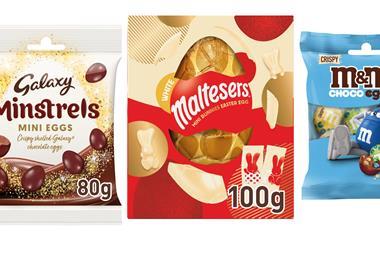
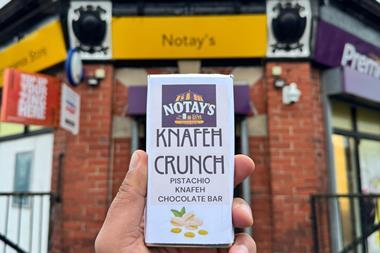

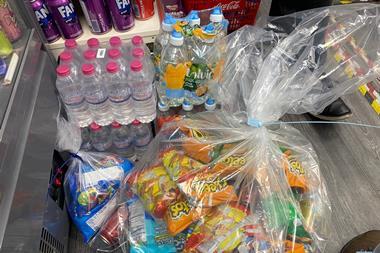

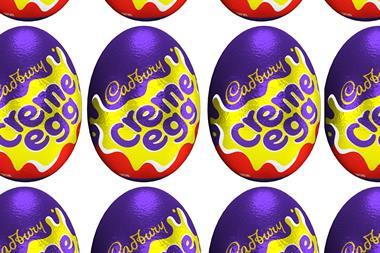

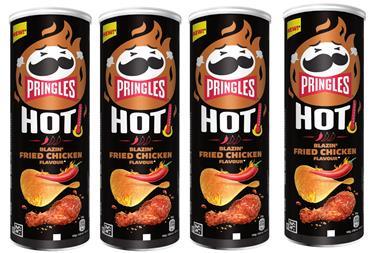



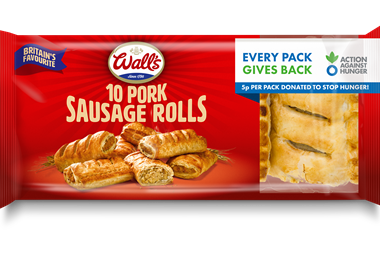
No comments yet